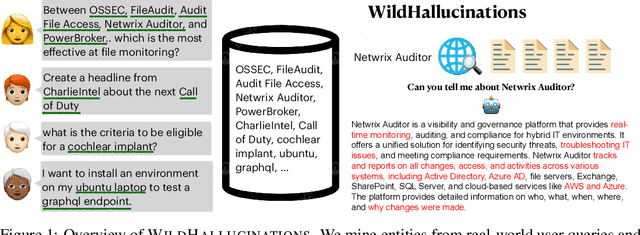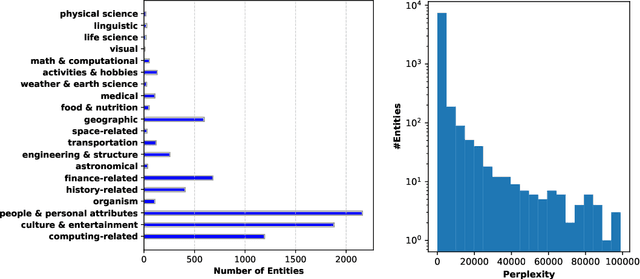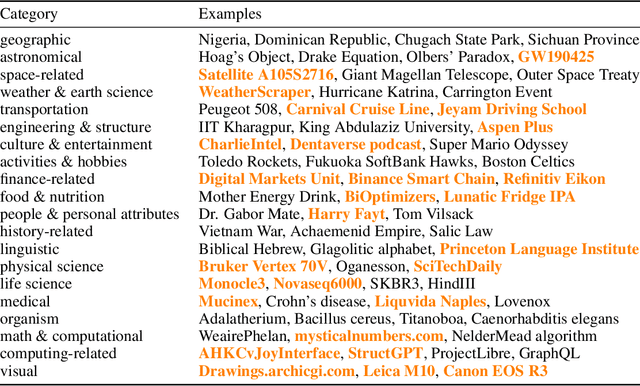Wenting Zhao
Multi-Turn Code Generation Through Single-Step Rewards
Feb 27, 2025Abstract:We address the problem of code generation from multi-turn execution feedback. Existing methods either generate code without feedback or use complex, hierarchical reinforcement learning to optimize multi-turn rewards. We propose a simple yet scalable approach, $\mu$Code, that solves multi-turn code generation using only single-step rewards. Our key insight is that code generation is a one-step recoverable MDP, where the correct code can be recovered from any intermediate code state in a single turn. $\mu$Code iteratively trains both a generator to provide code solutions conditioned on multi-turn execution feedback and a verifier to score the newly generated code. Experimental evaluations show that our approach achieves significant improvements over the state-of-the-art baselines. We provide analysis of the design choices of the reward models and policy, and show the efficacy of $\mu$Code at utilizing the execution feedback. Our code is available at https://github.com/portal-cornell/muCode.
ProjectTest: A Project-level LLM Unit Test Generation Benchmark and Impact of Error Fixing Mechanisms
Feb 11, 2025



Abstract:Unit test generation has become a promising and important use case of LLMs. However, existing evaluation benchmarks for assessing LLM unit test generation capabilities focus on function- or class-level code rather than more practical and challenging project-level codebases. To address such limitation, we propose ProjectTest, a project-level benchmark for unit test generation covering Python, Java, and JavaScript. ProjectTest features 20 moderate-sized and high-quality projects per language. We evaluate nine frontier LLMs on ProjectTest and the results show that all frontier LLMs tested exhibit moderate performance on ProjectTest on Python and Java, highlighting the difficulty of ProjectTest. We also conduct a thorough error analysis, which shows that even frontier LLMs, such as Claude-3.5-Sonnet, have significant simple errors, including compilation and cascade errors. Motivated by this observation, we further evaluate all frontier LLMs under manual error-fixing and self-error-fixing scenarios to assess their potential when equipped with error-fixing mechanisms.
ProjectTest: A Project-level Unit Test Generation Benchmark and Impact of Error Fixing Mechanisms
Feb 10, 2025



Abstract:Unit test generation has become a promising and important use case of LLMs. However, existing evaluation benchmarks for assessing LLM unit test generation capabilities focus on function- or class-level code rather than more practical and challenging project-level codebases. To address such limitation, we propose ProjectTest, a project-level benchmark for unit test generation covering Python, Java, and JavaScript. ProjectTest features 20 moderate-sized and high-quality projects per language. We evaluate nine frontier LLMs on ProjectTest and the results show that all frontier LLMs tested exhibit moderate performance on ProjectTest on Python and Java, highlighting the difficulty of ProjectTest. We also conduct a thorough error analysis, which shows that even frontier LLMs, such as Claude-3.5-Sonnet, have significant simple errors, including compilation and cascade errors. Motivated by this observation, we further evaluate all frontier LLMs under manual error-fixing and self-error-fixing scenarios to assess their potential when equipped with error-fixing mechanisms.
Commit0: Library Generation from Scratch
Dec 02, 2024Abstract:With the goal of benchmarking generative systems beyond expert software development ability, we introduce Commit0, a benchmark that challenges AI agents to write libraries from scratch. Agents are provided with a specification document outlining the library's API as well as a suite of interactive unit tests, with the goal of producing an implementation of this API accordingly. The implementation is validated through running these unit tests. As a benchmark, Commit0 is designed to move beyond static one-shot code generation towards agents that must process long-form natural language specifications, adapt to multi-stage feedback, and generate code with complex dependencies. Commit0 also offers an interactive environment where models receive static analysis and execution feedback on the code they generate. Our experiments demonstrate that while current agents can pass some unit tests, none can yet fully reproduce full libraries. Results also show that interactive feedback is quite useful for models to generate code that passes more unit tests, validating the benchmarks that facilitate its use.
Are Triggers Needed for Document-Level Event Extraction?
Nov 13, 2024Abstract:Most existing work on event extraction has focused on sentence-level texts and presumes the identification of a trigger-span -- a word or phrase in the input that evokes the occurrence of an event of interest. Event arguments are then extracted with respect to the trigger. Indeed, triggers are treated as integral to, and trigger detection as an essential component of, event extraction. In this paper, we provide the first investigation of the role of triggers for the more difficult and much less studied task of document-level event extraction. We analyze their usefulness in multiple end-to-end and pipelined neural event extraction models for three document-level event extraction datasets, measuring performance using triggers of varying quality (human-annotated, LLM-generated, keyword-based, and random). Our research shows that trigger effectiveness varies based on the extraction task's characteristics and data quality, with basic, automatically-generated triggers serving as a viable alternative to human-annotated ones. Furthermore, providing detailed event descriptions to the extraction model helps maintain robust performance even when trigger quality degrades. Perhaps surprisingly, we also find that the mere existence of trigger input, even random ones, is important for prompt-based LLM approaches to the task.
A Controlled Study on Long Context Extension and Generalization in LLMs
Sep 18, 2024



Abstract:Broad textual understanding and in-context learning require language models that utilize full document contexts. Due to the implementation challenges associated with directly training long-context models, many methods have been proposed for extending models to handle long contexts. However, owing to differences in data and model classes, it has been challenging to compare these approaches, leading to uncertainty as to how to evaluate long-context performance and whether it differs from standard evaluation. We implement a controlled protocol for extension methods with a standardized evaluation, utilizing consistent base models and extension data. Our study yields several insights into long-context behavior. First, we reaffirm the critical role of perplexity as a general-purpose performance indicator even in longer-context tasks. Second, we find that current approximate attention methods systematically underperform across long-context tasks. Finally, we confirm that exact fine-tuning based methods are generally effective within the range of their extension, whereas extrapolation remains challenging. All codebases, models, and checkpoints will be made available open-source, promoting transparency and facilitating further research in this critical area of AI development.
WildVis: Open Source Visualizer for Million-Scale Chat Logs in the Wild
Sep 05, 2024Abstract:The increasing availability of real-world conversation data offers exciting opportunities for researchers to study user-chatbot interactions. However, the sheer volume of this data makes manually examining individual conversations impractical. To overcome this challenge, we introduce WildVis, an interactive tool that enables fast, versatile, and large-scale conversation analysis. WildVis provides search and visualization capabilities in the text and embedding spaces based on a list of criteria. To manage million-scale datasets, we implemented optimizations including search index construction, embedding precomputation and compression, and caching to ensure responsive user interactions within seconds. We demonstrate WildVis's utility through three case studies: facilitating chatbot misuse research, visualizing and comparing topic distributions across datasets, and characterizing user-specific conversation patterns. WildVis is open-source and designed to be extendable, supporting additional datasets and customized search and visualization functionalities.
Great Memory, Shallow Reasoning: Limits of $k$NN-LMs
Aug 21, 2024



Abstract:$K$-nearest neighbor language models ($k$NN-LMs), which integrate retrieval with next-word prediction, have demonstrated strong performance in language modeling as well as downstream NLP benchmarks. These results have led researchers to argue that models trained on poor quality or outdated data could perform well by employing a $k$NN extension that has access to a higher-quality datastore. In this work, we ask whether this improved ability to recall information really translates into downstream abilities. We extensively evaluate $k$NN-LMs on a diverse set of tasks, ranging from sentiment classification and commonsense reasoning to multi-hop reasoning. Results show that $k$NN-LMs excel at memory-intensive tasks, where utilizing the patterns in the input is sufficient for determining the output, but struggle with reasoning tasks that require integrating multiple pieces of information to derive new knowledge. We further demonstrate through oracle experiments and qualitative analysis that even with perfect retrieval, $k$NN-LMs still fail to determine the correct answers, placing an upper bound on their reasoning performance. Code and datastores are released at https://github.com/GSYfate/knnlm-limits/.
WildHallucinations: Evaluating Long-form Factuality in LLMs with Real-World Entity Queries
Jul 24, 2024



Abstract:While hallucinations of large language models (LLMs) prevail as a major challenge, existing evaluation benchmarks on factuality do not cover the diverse domains of knowledge that the real-world users of LLMs seek information about. To bridge this gap, we introduce WildHallucinations, a benchmark that evaluates factuality. It does so by prompting LLMs to generate information about entities mined from user-chatbot conversations in the wild. These generations are then automatically fact-checked against a systematically curated knowledge source collected from web search. Notably, half of these real-world entities do not have associated Wikipedia pages. We evaluate 118,785 generations from 15 LLMs on 7,919 entities. We find that LLMs consistently hallucinate more on entities without Wikipedia pages and exhibit varying hallucination rates across different domains. Finally, given the same base models, adding a retrieval component only slightly reduces hallucinations but does not eliminate hallucinations.
I Could've Asked That: Reformulating Unanswerable Questions
Jul 24, 2024



Abstract:When seeking information from unfamiliar documents, users frequently pose questions that cannot be answered by the documents. While existing large language models (LLMs) identify these unanswerable questions, they do not assist users in reformulating their questions, thereby reducing their overall utility. We curate CouldAsk, an evaluation benchmark composed of existing and new datasets for document-grounded question answering, specifically designed to study reformulating unanswerable questions. We evaluate state-of-the-art open-source and proprietary LLMs on CouldAsk. The results demonstrate the limited capabilities of these models in reformulating questions. Specifically, GPT-4 and Llama2-7B successfully reformulate questions only 26% and 12% of the time, respectively. Error analysis shows that 62% of the unsuccessful reformulations stem from the models merely rephrasing the questions or even generating identical questions. We publicly release the benchmark and the code to reproduce the experiments.
 Add to Chrome
Add to Chrome Add to Firefox
Add to Firefox Add to Edge
Add to Edge